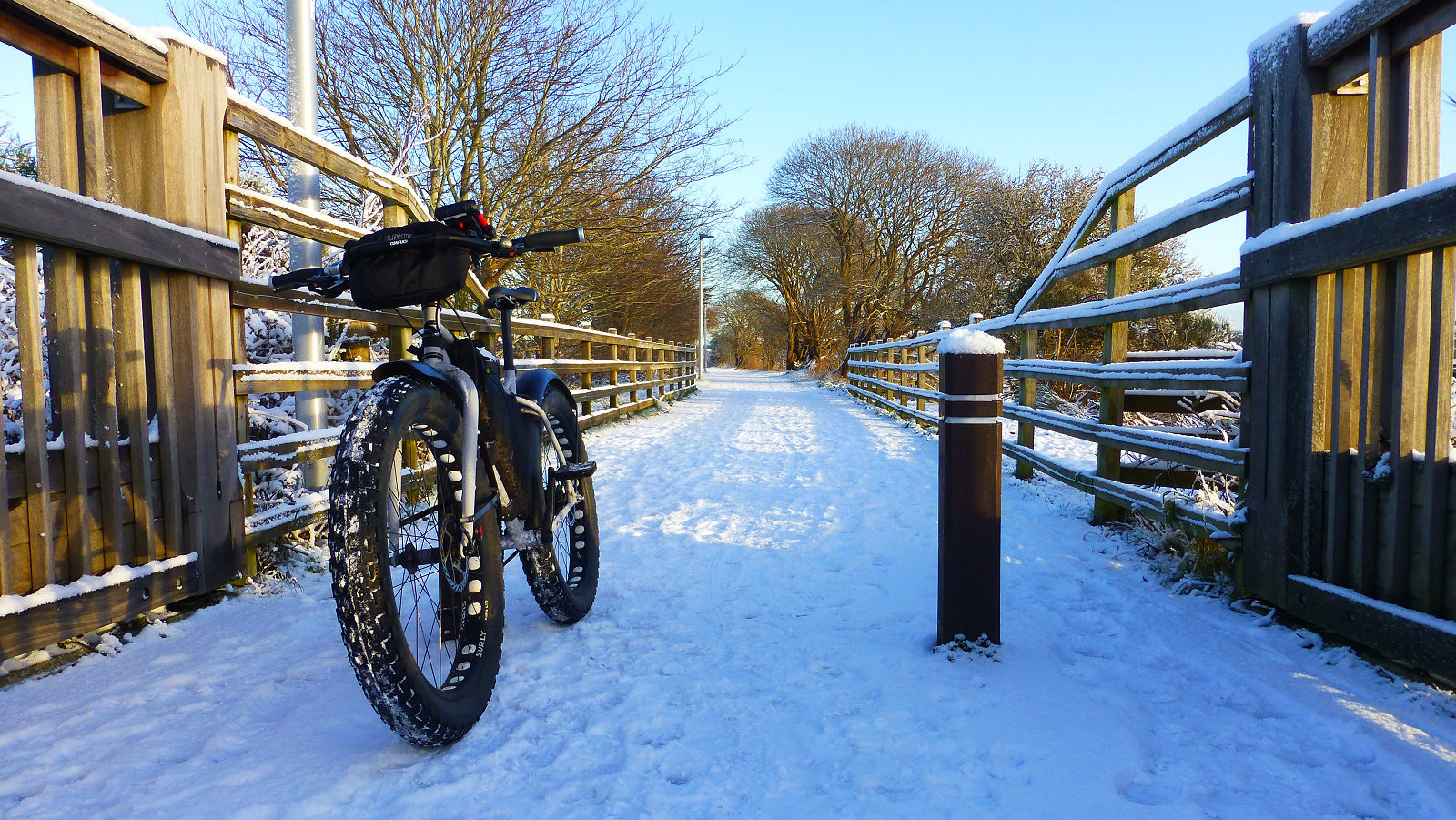Playing the Turf game in winter can be great fun, especially in the snow, it can also be very challenging and it can also be really horrible. Which one it is will often be down to how well you are prepared and what conditions you are prepared to put up with. Winter weather is the main problem for turfers, many simply don’t play Turf, while others brave the elements and continue to rack up the points. So, how do we prepare for Winter turfing?
Be you cycling or be you walking, clothing is the first thing to consider. Winter clothing needs to keep you warm but not too warm, particularly if cycling, and it needs to keep you dry, while still allowing your body to breath and not get too sweaty. Above all is should be comfortable. For many years of cycling and hill walking, the best way I’ve found to manage this is multiple thin layers of clothing, allowing you to add or remove clothing as and when required. Fewer thicker layers do not allow you to do this as well.
Starting with the upper body, I try to avoid cotton t-shirts which can soon get damp from sweat, preferring the more technical fibres that wick moisture away from the body. Base layer is usually short sleeved t-shirt, followed by a long sleeved t-shirt. A light fleece then goes on top, followed by a wind-proof jacket, usually of Pertex or a similar material. When it’s really cold a lightweight padded duck-down jacket is used, although I recently wrecked my Alpkit jacket on some dog rose thorns. In wet weather, I replace the wind-proof jacket with a light weight breathable waterproof one. I can then adjust clothing as required, each item taking up minimal room on the bike.
As for headgear, my preference in winter is for a mountain cap, a sort of waterproof heavy duty baseball cap with fold-down sides. Not only does it fit under my cycling helmet but the peak keeps the rain of my spectacles and the flaps keep my ears warm. Lowe Alpine and Outdoor Research are two brands that offer good models. I don’t mind looking a bit odd.
Keeping the hands and fingers warm is also important, especially if cycling. I would always go for gloves that are roomy, allowing you the wiggle your fingers which can make all the difference in keeping them toasty. You will also find that a roomy fit makes it easier to remove them without pulling out the inner layers, often a pain to get them back on again. In really cold weather, a set of pogies are great. There are essentially handlebars muffs that attach to the bike over the grips and levers. Means you can also wear thinner gloves. Whatever gloves you use, a pair that are compatible with mobile phone touch screens make turfing so much easier.
On the lower body, legs tend not to need so much protection as then generate plenty of heat and a pair of cycling legging or outdoor trousers generally do the job fine. If really cold, I’ll wear leggings under the trousers but often find them too warm and they get removed. On the topic of footwear, walking boots are good when there’s snow on the ground. I find that if you don’t lace up the higher rungs, they allow more flex at the ankle for cycling. Otherwise, I wear outdoor approach shoes with plenty of room for toe wiggle, as I find that helps keep my toes warm. Waterproof Sealskinz socks are amazing.
Cycling in winter generally revolves around the decreasing the risk of falling of the bicycle. We can deal with the cold and the wet easy enough, but frost, ice and snow are another matter. Personally, I don’t cycle when there’s a risk of icy patches on footpaths or untreated roads, preferring to go on foot, despite being much slower than cycling. It’s far too easy to fall off on a corner and hurt yourself and ay my age, almost 60, the body is not as resilient as it used to be. Lying snow, or snow on top of ice, isn’t any issue, as I own a Surly Pugsley fat bike which excels in such conditions, the 100 mm wide tyres running at 10 psi provide plenty of grip, inspiring confidence to ride over anything and its simply just great fun. I’ve found that a fat bike will be useable in powder snow up to 200 mm deep if it’s not too wet. Deep wet snow is really hard work. A fat bike excels on hard-pack snow.
On the bike itself there are a few things you can do to improve matters. The first is to fit mudguards, not trendy, I know, but they help keep you dry and comfortable, always a good thing is spending long hours in the saddle out turfing. A good set of tyres with plenty of grip will also help. For urban areas, which seems to be where most Turf zones are located, tyres will a general-purpose tread pattern are ideal. You don’t need full blown off-road knobblies, they will slow you down and are far from ideal on tarmac. My preference is for Schwalbe Marathon Dureme 28 x 2.0″ tyres which give a great ride, have in-built puncture protection and a decent amount of grip. They are not so good off-road but I’d be using a different bike if the zones were mostly located off-road anyway.
Winter time comes with reduced daylight hours, though with the recent availability of powerful and long-lasting LED bicycle lights, turfing after dark should not be a problem. When purchasing bike lights, the first thing to do is decide how long you need the battery to last and look at the various mode options the light will have. It may have something like 2 hours’ duration of full blast mode with 8 hours on eco mode. You can get lights that offer blindingly bright light for 8 hours but costing the same as a bicycle. Ask yourself if they are really necessary. My preference is for two lights, one running on eco mode for up to 8 hours with the second as backup. Don’t forget rear lights as well, the more the merrier.
Finally, a few hints and tips for winter turfing. Use a vacuum flask to stop your water from freezing. Your bike will run better if your keep it clean. Wash the salt of your bike as often as you can or the bike will suffer the consequences. Dry all your gear after being out in bad weather. Charge your LED bike lights and mobile phone as soon as you get home, ready for next time. Keep turfing!
Copyright ©2021 Gary Buckham. All rights reserved.


